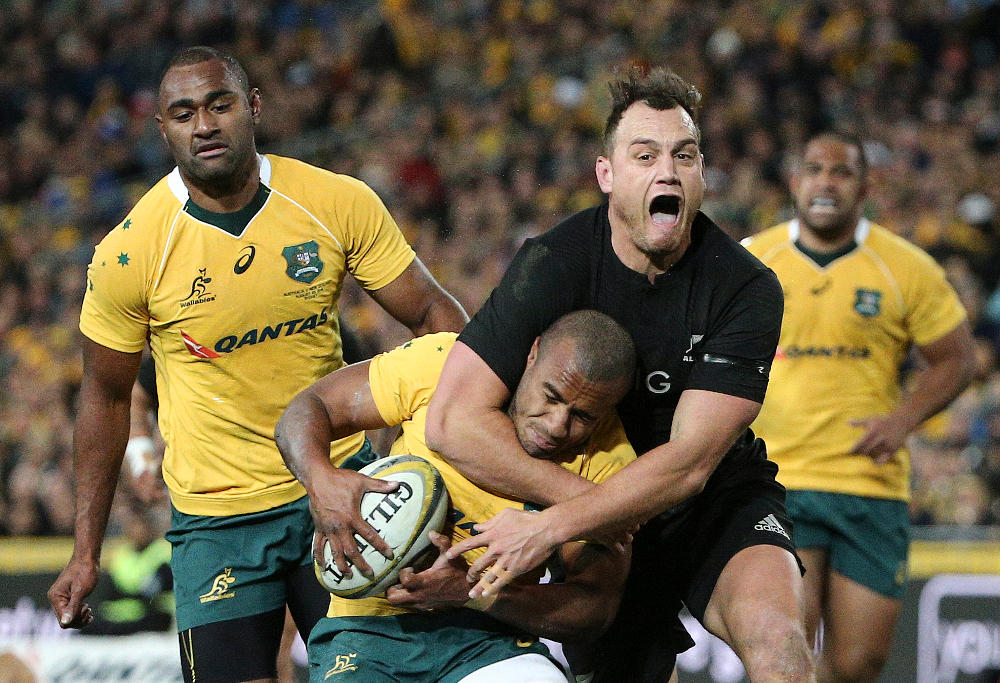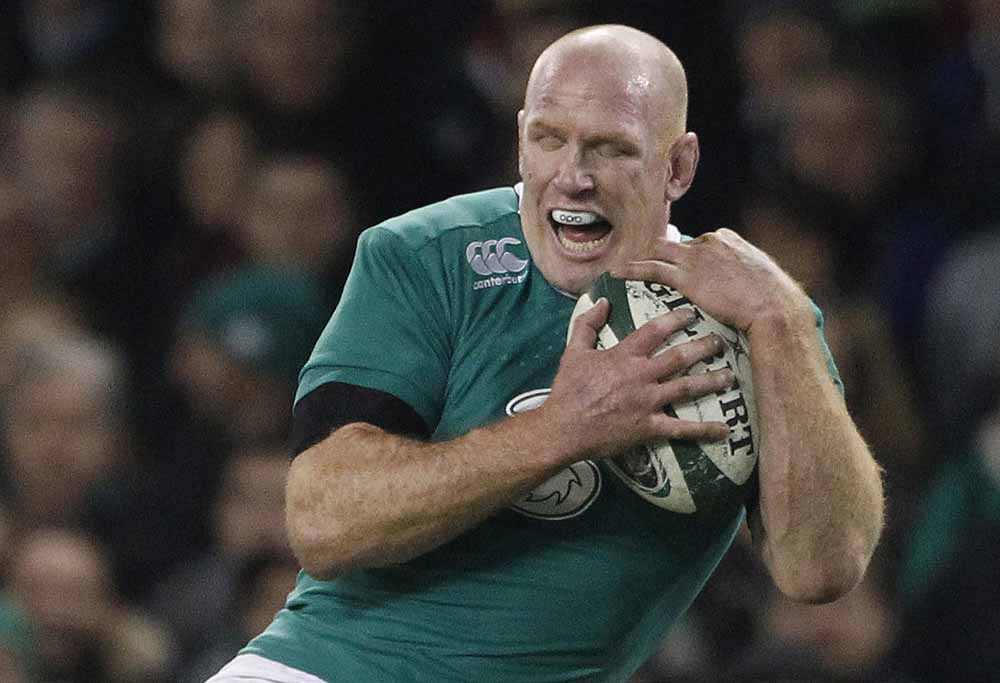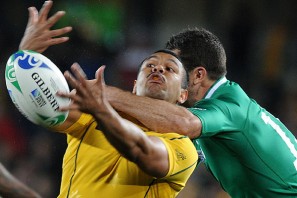World Rugby’s announcement that the head will be a “no-go area” is one of the most important changes to the game in the last 50 years.
The new laws will enhance the spectacle of the game by reducing the incidence of sickening, long-term injuries.
Skilful play will be easier with the elimination (hopefully) of thuggish attacks to the head and the reduction of accidental (on purpose?) attacks.
The new laws, too, should create the legal and injury prevention environment for a tough contact sport to survive for many, many decades to come in an era of litigation and fears over on-going health issues suffered by players in the years after their careers have ended.
Let’s go the World Rugby announcement which was sent out to the rugby community on December 14th with the heading: World Rugby announced measures to limit contact with the head.
Five bullet points were fired out at the beginning of the email:
* New law application guideline will codify zero-tolerance to contact with the head
* Approach informed by largest-ever study identifying most common situations leading to head injuries
* Players, coaches and match officials urged to be proactive in changing culture
* Latest step in proactive, evidence-driven approach to injury reduction
* Head is a no-go area.
World Rugby studied 1,516 elite matches in which head injury assessments (HIA) occurred. The data confirmed that 76 per cent of all head injuries occur in the tackle. A further finding that seems to be counter-intuitive is that 72 per cent of the HIA incidents impacted the tackler.
The key factors in these HIA incidents were “body position, speed, and direction” of the tackle.
I noted this finding that it is the tackler rather than the ball-carrier who suffers the most head injuries seems to be counter-intuitive. Most of us following the rugby game would be inclined to believe that the majority of injuries from head-high tackles, the swinging arms shots and stiff arms, for example, are the cause of most of the injuries. And that these injuries mainly involve the tackled player.
It is a surprise, therefore, that the World Rugby statistics suggest that the tackled player suffers from 28 per cent of the HIAs and that the tackling player suffers from 72 per cent of the HIA.
But this is what the “evidence-based” data is saying. I would be interested to know just what the injuries to the tackler rather than the tackled players actually involve.
The new laws, apparently, are intended to save indiscriminate tacklers prone to head-high shots against their opponents from their own recklessness.
However, the innocent victims of the head-high shots are given (thankfully) much greater protection from the new laws than they were in the past. This is the important point.

From January 3rd, 2017 there will be two new categories of dangerous tackles, each category will carry its own specific penalty.
The overall point of the new laws will be to “change the culture in the sport to ensure that the head is a no-go area.”
Category 1: Reckless Tackle
“A player is deemed to have made reckless contact during a tackle or attempted tackle or during other phases in the game if in making contact, the player knew or should have known that there was a risk of making contact with the head of an opponent, but did so anyway. This sanction applies even if the tackles starts below of the line of the shoulders. This type of contact also applies to grabbing and rolling or twisting around the head/neck area even if the contact starts below the line of the shoulders.
Minimum sanction: Yellow card
Maximum sanction: Red card.”
This section makes it clear that the “no-go” area for the head involves more than the tackle situation. The “other phases in the game” situations involve clearing out of rucks and contests from kicks situations, you would think.
Essentially every contact area in the rugby game comes into play with the new laws.
Moreover, even if the tackle starts with an arm below the shoulder it is not protected from a sanction if contact is somehow made with the head.
The clear inference here is that tackles should be, at their highest point, above the waist rather under the shoulder. If the tackle is under the shoulder there is always the likelihood that it could slip up.
I think that coaches should be indoctrinating their players in the above the waist rule to ensure that yellow and red cards don’t threaten their chances of winning.
This reminds me, too, that more than a decade ago the then IRB boss of referees, the former Scottish referee Alan Hosie, suggested that in time that a waistline and below rule on tacklers would be introduced into rugby.
We are coming to this sort of rule in the not too distant future.
Right now, though, there has been has been some robust discussion in the rugby media about how referees, TMOs, and assistant referees are going to apply the rules in respect of the player knowing the risk of making contact with the head of the ball carrier.
Part of the answer, I think, comes from…
Category 2: Accidental Tackle
“When making contact with another player during a tackle or an attempted tackle or during other phases of the game, if a player makes accidental contact with an opponent’s head, either directly or where the contact starts below the line of the shoulders, the player may still be sanctioned. This includes where the ball-carrier slips into the tackle.”
The example that World Rugby gives suggests that if a ball-carrier slips into a tackle that they are partly responsible for the accident. I would think this unlocks the key to the way World Rugby is thinking on this issue.
If a tackler makes contact with the head of a ball-carrier and there is no extenuating circumstance of the equivalent of, saying, slipping into the tackle, then the tackle is automatically a red card.
The essential notion behind the laws is that a “zero-tolerance culture regarding head contact in the game” is critical.
My take on this is that any contact with the head of the ball-carrier by the tackler will be an automatic yellow card (or a red card if there is an injury involved). Only in rare instances will a head-high tackle be only a penalty infringement.
The new laws were drawn up with input from a panel featuring England coach Eddie Jones, the vice-president of World Rugby and former Puma great Augustin Pichot, Ireland great Paul O’Connell and World Rugby boss and former referee Alain Rolland.

They came to the conclusion that a policy based on the head being a no-go area for tacklers and zero tolerance for head-high tackles was the only way to change the culture regarding tackling.
It is good that both player and coach input has been used. I believe their approach is the only sensible one, given the complexity of the tackle events in matches and the difficulty in adjudicating on intent in the few seconds or so the referee has in a match.
The zero tolerance approach places the onus on the tackler rather than on the referee. If the head-high tackle is not made, there is no decision to be made on it by the referee.
There has been criticism, though, from the former England number 8, and now defence coach at Harlequins, Nick Easter who argues that the tough Category 1 law will encourage diving to draw a penalty: “Goodbye to the game as we know it! Enter play acting to punish tacklers. Madness and bedlam will ensure.”
There is some truth in this. French and Argentinian players, in particular, have been over-fond of the dive. Wales were hindered from making World Rugby Cup final in 2011 by a dive by a French winger. Alain Rolland was the referee who made the fateful decision.
On the practice of the Rugby World Cup 2011 and after a year of the Pumas in The Rugby Championship, there was an edict from World Rugby to clamp down on divers, including after a game if necessary.
This edict has not been acted on. I would think that World Rugby and SANZAAR during the Super Rugby and The Rugby Championship tournaments need to be more pro-active on diving, a pestilent in the modern game, if they want the rugby community to go along with the necessary new laws that are being introduced.
Wayne Smith in The Australian has made comments about the implication of the new laws on how teams will shape their tactics to adapt to them: “Teams such as Ireland, who attempt to tackle the ballrunner high and hold him off the ground in order to win a scrum feed, might find themselves more constrained, while off-loading sides such as the All Blacks could benefit from the new emphasis on lower tackling.”
I see the evolution of the laws of rugby as a journey from a low-scoring game to a high-scoring game; from soccer implications to basketball implications.
The history of the points scoring system reflects this soccer to basketball scoring tendency in rugby.
And so do the law changes and the equipment revolution. This is especially true of revolutionary changes that have been brought in recent years, especially since rugby became a professional game in 1996.
From the primacy of the advantage rule, through to the “use-it or lose-it” rules, to codification of the set pieces to even the advances in the ball technology which allows for more accurate and longer passing, all these factors have had the effect of keeping the ball in play for nearly twice as long as, say, 30 years ago when over 100 lineouts was not an uncommon feature of the game.
Increasingly, the thuggery is being taken out of rugby and skills, speed, passing and running have been rewarded with the imposition of new laws.
Because of these changes, rugby is becoming a rapidly expanding game throughout the world, as the new advances in China, for instance, indicate.
And also the huge expansion of rugby as a sport for women.
The zero tolerance towards head-high tackles is the appropriate response to all these changes.
There is one of factor, too, that needs to be considered. That is the legal implications for a game that involves the risk of concussions and long-term brain damage from multiple knocks to the heads of its players.
I have in front of me as I am writing this a clipping about a recent court case in Cleveland, Ohio, where it was ruled that the widow of a former Notre Dame football player can proceed with claims in a lawsuit that said her husband was disabled and ultimately died from concussion-related head injuries suffered during his college career in the 1970s.
The lawsuit alleged that Notre Dame had shown “reckless disregard” for the safety of its players and a failure to educate and protect them from concussions.
This is the legal future for contact sports if their organisations do not behave in the way World Rugby has done, culminating in head-high zero-tolerance laws, to take the risks that can be taken out of a risky game.
Dr Ian Murphy, the medical director of New Zealand Rugby, has set out cogently the challenge to rugby from the contact imperatives of the sport and the proper response to these imperatives:
“We have seen the headlines about rising injury rates in rugby. By way of context, 150,000 people play rugby each winter in about 45,000 games, Injury rates fairly reflect the numbers playing what is a contact sport. Far more children are hurt in playgrounds and backyards than on rugby fields …
“Like all sports, rugby helps counter sedentary-lifestyle illnesses, such as obesity and heart disease. We want rugby to continue providing those benefits as it has for generations. We don’t have all the answers, but we are committed to improving our safety programmes so that we can give parents, players and fans the confidence they need that the risks are well-managed.”
In the 1890s The Bulletin called rugby “the undertaker’s friend.” 120 years later, the game is becoming the players’ and the fans’ friend.































































































